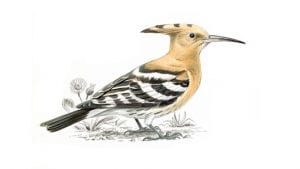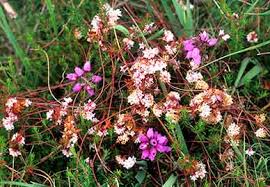An excellent talk by Les Allen-Williams on Wednesday evening focused on the need to record plant (including mosses and lichens) and animal (including insects, arachnids, fish and amphibians) species sighted locally. This is so an accurate picture can be formed of what species occur locally; which are common and which are rare.
Les directed us to the iRecord website to record sightings or, if you prefer, send details of your sightings to him [email protected] A photograph would be extremely helpful.
Les made the point that common species tend not to be reported so the records of sightings of common species, such as wood pigeon and magpie are odd – we all know they are there but the records do not say that they are! So it is worth reporting common species as well as the rare ones.
Some types of animals and plants are under-reported because it is difficult to distinguish between species. If anyone has a passion for, or expertise in, any type of plant or animal it would be really helpful if they would report their sightings.

We were told that global warming is a reality – as we all know. This has and will have negative aspects and positive aspects. One consequence is that in the south of England we are increasingly seeing species previously seen further south in Europe, some welcome, some not so welcome. The welcomed species include the Hoopoe and Golden Oriole, both which have been sighted at Sandgate Park in recent years, and the Black Kite which was sighted nearby.
Birds are not the only type of animal that migrates to Britain. Summer visitors include insects from warmer latitudes.
Les took us on a ‘tour’ of Sandgate Park, pointing out the various habitats, such as the sandy heather bank that is home to mining bees, the ponds that attract damsel and dragon flies and the hidden meadow that is favoured by butterflies. He also gave us some tips on what we could do to improve the habitats in Sandgate Park. These included
- remove some rhododendron
- keep the holly
- remove the small pines
- leave piles of logs, especially beech and oak
- remove some bramble from the hidden meadow
- try to get some umbellifers, such as cow parsley and hogweed, into the hidden meadow
- remove the invasive birch saplings and shrubs from the wet heath
- leave some nettles
We will do what we can with our resources and within the Horsham District Council management plan for the site.
Finally, Les asked us to keep an eye out for any dodder on the heather, which may appear  as the heather regenerates on the dry sandy heather bank. If you see it please report this rare plant. It will look like thick red thread entwined around the heather.
as the heather regenerates on the dry sandy heather bank. If you see it please report this rare plant. It will look like thick red thread entwined around the heather.